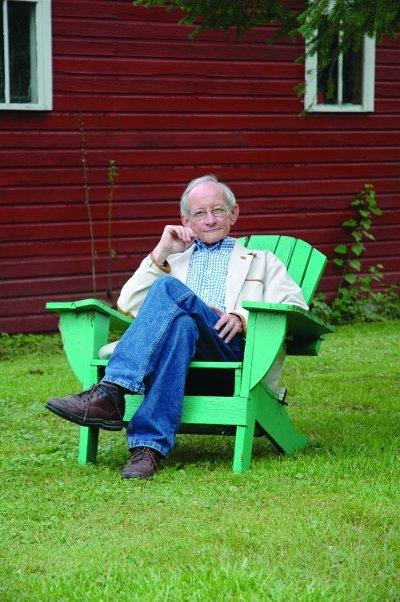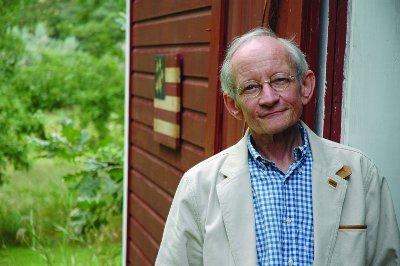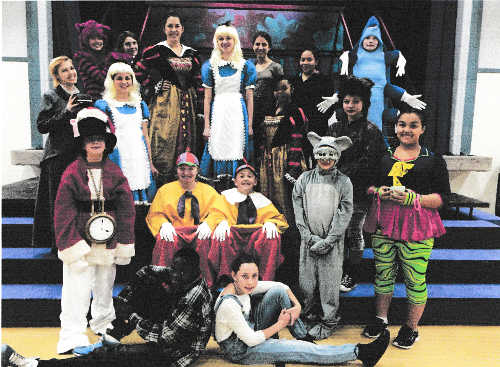STAR WARS: THE FORCE AWAKENS (Rated PG-13)
The hype for the major film of the holiday season has been colossal, but it has proven authentic.
Yes, I’m talking about “Star Wars: The Force Awakens,” which is the real deal after the regret of the remarkably dull trilogy of prequels that fans had to endure to get to Episode VII.
In the capable hands of director J.J. Abrams (two “Star Trek” films), the feeling that we are back on track for the tone, style and even humor of the original “Star Wars” is unmistakable, and obviously a welcome relief to the misfires that George Lucas foisted on us with “The Phantom Menace” and the two episodes that followed.
The “Star Wars” franchise is now in the hands of the Disney Empire. Good news for all, it’s not an evil empire. Evidence abounds that the new home for this beloved franchise (okay, just the first three films) has treated this new adventure with great respect and reverence.
Right from the very opening scene of the screen crawl that informs us that Luke Skywalker has gone missing somewhere in the galaxy, the audience is propelled into a state of wonder and absolute delight within the vastly exhilarating realm of the “Star Wars” universe.
Darth Vader may no longer be around, but his progeny are in full villainous mode in the oppressive force called by the totalitarian name of First Order, commanded by Kylo Ren (Adam Driver) under the tutelage of hulking Supreme Leader Snoke (voiced by Andy Serkis).
Landing on the desolate planet of Jakku, the First Order descends on the unsuspecting inhabitants, setting loose the army of stormtroopers to exterminate everyone while searching for a piece of a digital map that may reveal the hideaway of Luke Skywalker.
It’s on Jakku that we are introduced to several new key players, all of whom prove to be valuable assets to the series. Giving C-3PO and R2-D2 a run for their money is the new adorably rotund robot BB-8, an essential figure in helping the Resistance fend off the First Order goons.
Up until the attack on Jakku, the clever BB-8 had been the constant companion of fighter pilot Poe Dameron (Oscar Isaac), the best commander in the Resistance fleet. The charismatic Poe is a prime figure in later battle scenes that have a superbly familiar yet welcome feeling.
Probably the most inviting new character is Daisy Ridley’s Rey, an outcast loner and scavenger on Jakku, who’s barely scraping by selling spare parts taken from abandoned spacecraft and other equipment. But she’s drawn into the Resistance from a most unlikely source.
During the raid on Jakku, a stormtrooper who only goes by a serial number develops a conscience and becomes appalled at having to kill innocents. Later taking the name of Finn (John Boyega), this former member of the First Order joins forces with Rey for pure survival.
More resourceful than her scavenging skills would suggest, Rey proves to be an adept female hero and a true fighter, and along with Finn’s brave new outlook, this dynamic duo eventually gets noticed by Harrison Ford’s iconic Han Solo.
By the time Han Solo makes his entrance, teamed up as usual with his co-pilot Chewbacca (Peter Mayhew), the massively hairy creature that delights with his quirky behavior, the story line is moving into full battle conflict mode between the heroic Resistance fighters and the First Order goons.
There are hardly more satisfying moments than when Han Solo joyfully brings the Millennium Falcon, derisively called a heap of junk by others, out of mothballs and gets it going once again to travel through the galaxy.
Han Solo may be the most beloved character for his nicely offbeat nature, being characteristically grumpy and irreverent, while tossing off sarcastic barbs. It’s also funny when rival bounty hunters show up to threaten his life for failure to deliver promised goods.
Princess Leia (Carrie Fisher) is also in the picture, but she’s ditched her royal title and the hair buns to become General Leia, head of the Resistance. But what she really needs is a Jedi Knight, and well, Luke Skywalker is the one who can harness the power of the Force.
Without giving too much away, the quest to find Skywalker is the primary reason for an escalating fight between the Resistance and the First Order. The bad guys know Skywalker could train legions of brave souls to turn back the predatory Evil Empire.
Certain things happen in the course of “Star Wars” that no one should know when experiencing this Episode VII for the first time. Disney pleaded with critics not to reveal too much, and that request is honored here.
Suffice it to say, for “Star Wars: The Force Awakens” the title says it all. Indeed, the Force is now awake and alive, and it is something to be reckoned with. From start to finish, the whole enterprise is a glorious adventure, one that lets us forget if not forgive the George Lucas mistakes of the past.
This shiny new “Star Wars” easily ranks with the best movies of the year, and without question, it is the best one for this holiday season.
At least two more installments are in the works, and let’s hope the Force is with the creative talent putting them together.
Tim Riley writes film and television reviews for Lake County News.
Arts & Life

Several years ago, I co-edited an anthology of poems about birds, and I wish I’d had the opportunity to include this one, a delight. J. Allyn Rosser lives in Ohio. Her most recent book is Mimi’s Trapeze (University of Pittsburgh Press, 2014).
Pelicans in December
One can’t help admiring
their rickety grace
and old-world feathers
like seasoned boardwalk planks.
They pass in silent pairs,
as if a long time ago
they had wearied of calling out.
The wind tips them, their
ungainly, light-brown weight,
into a prehistoric wobble,
wings’-end fingers stretching
from fingerless gloves,
necks slightly tucked and stiff,
peering forward and down,
like old couples arm in arm
on icy sidewalks, careful,
careful, mildly surprised
by how difficult it has become
to stay dignified and keep moving
even after the yelping gulls have gone;
even after the scattered sand,
and the quietly lodged complaints.
American Life in Poetry is made possible by The Poetry Foundation ( www.poetryfoundation.org ), publisher of Poetry magazine. It is also supported by the Department of English at the University of Nebraska-Lincoln. We do not accept unsolicited submissions. Poem copyright ©2014 by J. Allyn Rosser, “Pelicans in December,” from Mimi’s Trapeze, (University of Pittsburgh Press, 2014). Poem reprinted by permission of J. Allyn Rosser and the publisher. Introduction copyright © 2015 by The Poetry Foundation. The introduction's author, Ted Kooser, served as United States Poet Laureate Consultant in Poetry to the Library of Congress from 2004-2006.
THE NIGHT BEFORE (Rated R)
The holidays are fast approaching, and as usual, films with a Christmas holiday theme geared to family viewing are often on hand.
Of course, that may not be the case when part of the seasonal revelry involves an extended humorous scene involving Anthony Wiener-style cell phone imagery.
With Seth Rogen as no stranger to drug-fueled comedies, including “Pineapple Express” and “This is the End,” it should come as no surprise that “The Night Before” is appropriately rated R for drug use, strong sexual content and graphic nudity.
Oddly enough, “The Night Before” gets a rousing start with traditional storybook narration by Tracy Morgan, setting the stage for the enduring friendship of three disparate characters upholding a Christmas Eve tradition dating back to the their teenage years.
Having lost his parents in a tragic car accident when in high school, Joseph Gordon-Levitt’s Ethan remains in a state of arrested development. Unable to commit to his former girlfriend Diana (Lizzy Caplan) for whom he still carries a torch, Ethan’s life is stuck in place.
Meanwhile, Seth Rogen’s Isaac is a married man with an established career. His wife Betsy (Jillian Bell) is pregnant with their first child.
Needing to settle down into adulthood, Isaac find this Christmas Eve in New York to be likely his last night of debauchery.
That wild times loom for Isaac’s blowout holiday finale is made all the more evident by the unexpected gift he receives from Betsy, a tidy little box of hallucinogenic drugs, from mushrooms and cocaine to weed and an assorted mix of various pills.
Rounding out the trio is Anthony Mackie’s Chris, a journeyman professional football player suddenly thrust into fame in his NFL career at the unlikely age of 34, most likely due to the fact that his on-field performance has been recently enhanced by steroids.
These buddies have formed a pact to celebrate Christmas Eve each year with a series of rituals, from visiting the massive Christmas tree at Rockefeller Center and wearing garish holiday sweaters to signing karaoke in a dive bar and searching for an elusive underground party.
Since Ethan is somewhat adrift in his professional life, he starts the evening as a waiter dressed in an elf costume serving drinks and hors d’oeuvres before being demoted to the position of coat room attendant.
While putting away an overcoat, Ethan stumbles upon three golden tickets which are the coveted invites to the exclusive Nutcracka Ball, a secret shindig that moves around the five boroughs of New York City.
The tickets represent the Holy Grail of holiday partying, and while Isaac and Chris are ecstatic about the sudden good fortune that has fallen into Ethan’s hands, there are number of obstacles and humorous situations that may derail their long-awaited celebratory plans.
First of all, Isaac has consumed so many drugs that he tries to counteract one bad reaction with an ingestion of other drugs that he mistakenly believes would ameliorate the ill effects.
Getting separated from the group, Isaac staggers around Manhattan in a state of freefall, winding up in front of a Catholic church where he encounters Betsy and her family attending a midnight mass. Let’s just say that he ends up causing a horribly embarrassing commotion during the service.
Meanwhile, Chris is trying to impress his team’s star quarterback by attempting to score a supply of weed, which leads him back to his childhood home turf in search of the enigmatic drug dealer Mr. Green (Michael Shannon), a deadpan existential philosopher who proves to be as fascinating as he is inscrutable.
When not getting into a fight with a pair of drunken louts wearing Santa Claus costumes, Ethan finds himself at a party where his former flame Diana is hanging out with Mindy Kaling’s Sarah, an uninhibited co-worker who has a visceral dislike for Isaac.
One of the funny bits is how Sarah’s cell phone gets switched with Isaac’s phone, with some hilarious complications for both parties, particularly when Isaac reacts to messages from a man posting photos of his private parts.
The journey of “The Night Before” is meant to represent the closing of one chapter in life and moving on to the next level of adult responsibility. Not surprisingly, Seth Rogen’s Isaac is mostly humorously challenged in transitioning to respectability.
As to be expected in this type of comedy, there’s plenty of room for hit-and-miss gags and slapstick silliness, and while some of the humor falls flat, other situations are preposterously and outrageously funny.
In the end, “The Night Before” is somewhat uneven but will likely appeal to fans of the genre and films that pair up Seth Rogen and James Franco.
Tim Riley writes film and television reviews for Lake County News.
KELSEYVILLE, Calif. – December can be the hardest month of the year, especially when you have fresh losses and uncertainties for the future.
Carolyn Wing Greenlee and friends invite you to come sing with them Scriptures chosen to strengthen and encourage you through whatever you have to face.
The concert, “Let Not Your Heart Be Troubled," is this Thursday, Dec. 10, at 7:30 p.m. at Kelseyville Presbyterian Church, 5340 Third St.
Admission is free.
- Ted Kooser
American Life in Poetry: Weather Man

I’m well into my seventies, and I warm to simple, peaceful scenes. Here’s a fine love poem by Patricia Traxler, a Kansas poet, whose newest book, Naming the Fires, will be out in early 2016.
Weather Man
When it snows, he stands
at the back door or wanders
around the house to each
window in turn and
watches the weather
like a lover. O farm boy,
I waited years
for you to look at me
that way. Now we’re old
enough to stop waiting
for random looks or touches
or words, so I find myself
watching you watching
the weather, and we wait
together to discover
whatever the sky might bring.
American Life in Poetry is made possible by The Poetry Foundation ( www.poetryfoundation.org ), publisher of Poetry magazine. It is also supported by the Department of English at the University of Nebraska-Lincoln. They do not accept unsolicited submissions. Poem copyright ©2015 by Patricia Traxler, “Weather Man.” Poem reprinted by permission of Patricia Traxler. Introduction copyright © 2015 by The Poetry Foundation. The introduction's author, Ted Kooser, served as United States Poet Laureate Consultant in Poetry to the Library of Congress from 2004-2006.

LOWER LAKE, Calif. – Lower Lake High and Konocti Unified School District presents this month the holiday musical “Alice in Christmas Land.”
Come watch this wonderful fairy tale at Lower Lake High School in the multipurpose room at 7 p.m. Thursday, Dec. 10, and Friday, Dec. 11.
The admission fee is $5 for everyone.
“Alice in Christmas Land” will feature all of our childhood favorites: White Rabbit, Tweedledum and Tweedledee, Cheshire Cat, the Mad Hatter and multiple Alices.
The performance will feature a large cast, hilarious comedy, fun and easy Christmas songs for everyone to enjoy.
This year's cast is filled with young talent.
“Attendees should be prepared for a magical experience from a talented cast of young and veteran actors performing a tale that we all know and love,” said drama club teacher Tracy Lahr.
The drama club is in crunch time preparing for this musical during its last days of practice to give you their best performance.
This is a fairy tale the entire family knows and loves. Come join the excitement. Come watch our youth perform this wonderful classic.
For more information and tickets please contact Bruno Sabatier at 707-695-0834.
Lower Lake High School is located at 9430 Lake St.
LCNews
Award winning journalism on the shores of Clear Lake.
 |
 |
 |
 |
 |

 How to resolve AdBlock issue?
How to resolve AdBlock issue? 